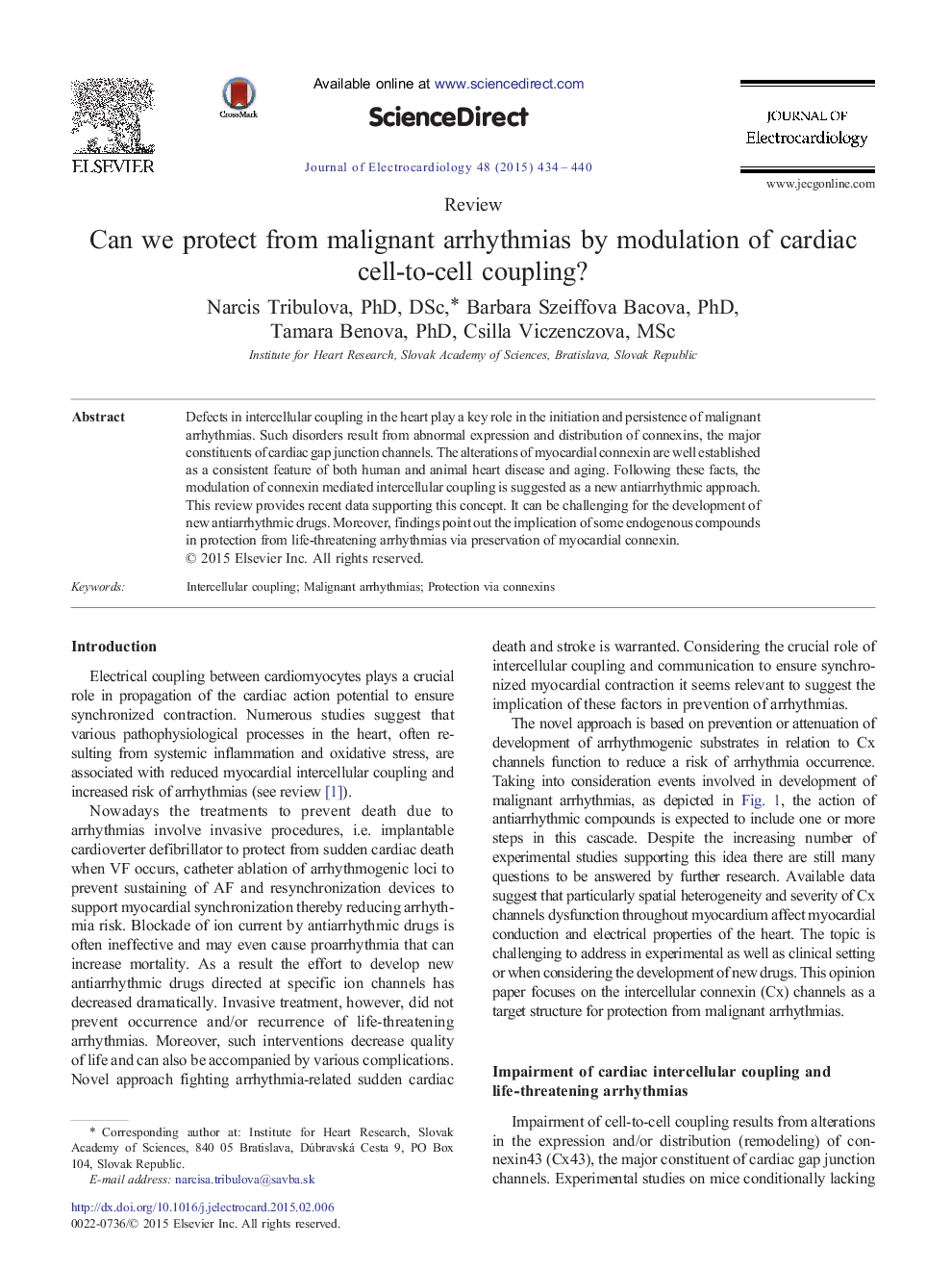| Article ID | Journal | Published Year | Pages | File Type |
|---|---|---|---|---|
| 2967598 | Journal of Electrocardiology | 2015 | 7 Pages |
•Defect in intercellular coupling in the heart is crucial in the development of malignant arrhythmias.•The modulation of connexin mediated intercellular coupling is suggested as a new antiarrhythmic approach.•This novel approach is based on elimination of arrhythmogenic substrate in relation to Cx channels functions.
Defects in intercellular coupling in the heart play a key role in the initiation and persistence of malignant arrhythmias. Such disorders result from abnormal expression and distribution of connexins, the major constituents of cardiac gap junction channels. The alterations of myocardial connexin are well established as a consistent feature of both human and animal heart disease and aging. Following these facts, the modulation of connexin mediated intercellular coupling is suggested as a new antiarrhythmic approach. This review provides recent data supporting this concept. It can be challenging for the development of new antiarrhythmic drugs. Moreover, findings point out the implication of some endogenous compounds in protection from life-threatening arrhythmias via preservation of myocardial connexin.
